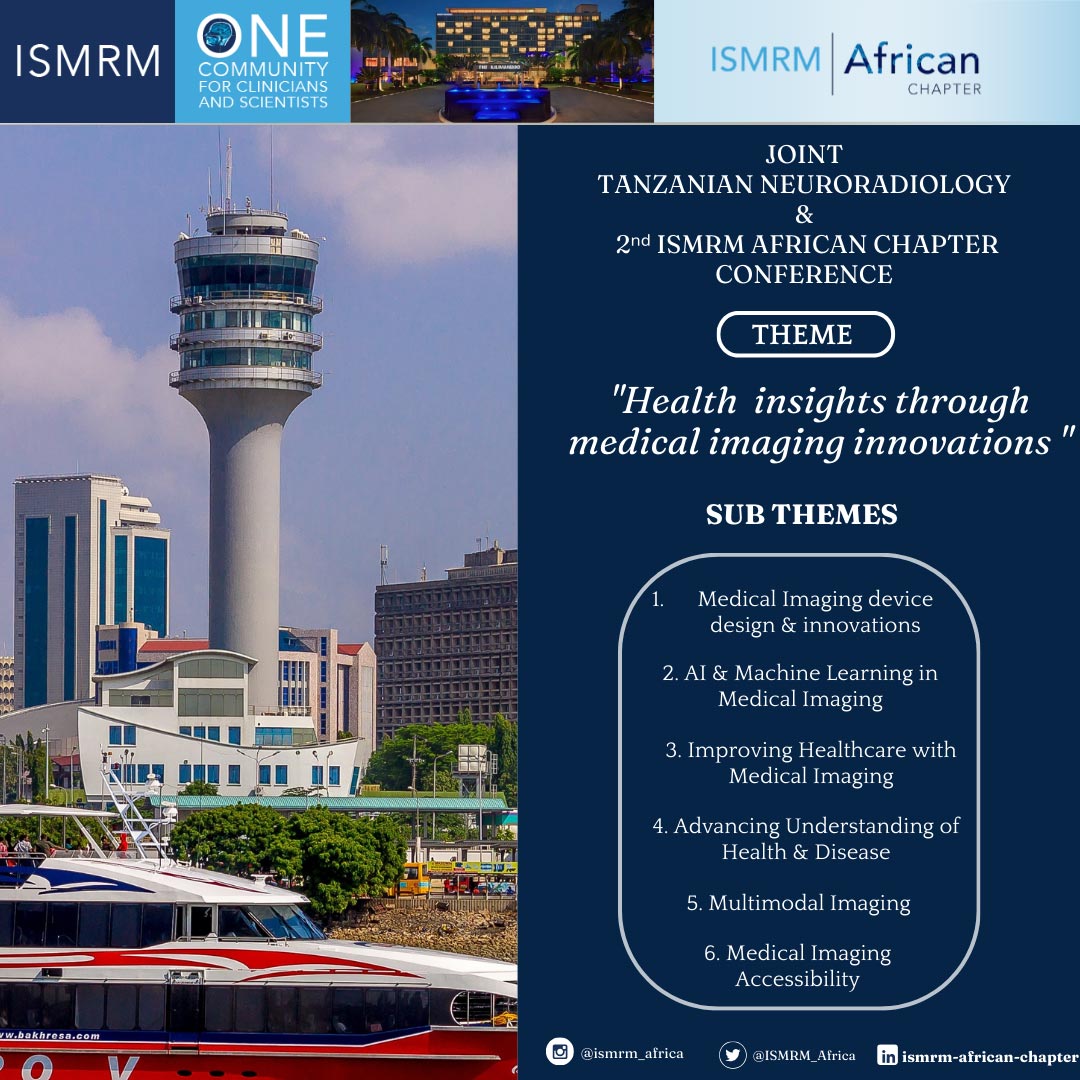
Chapter Home | Membership Information | Events | News | Chapter Constitution
Welcome to the African Chapter of the International Society for Magnetic Resonance in Medicine.
The African Chapter of the ISMRM is an exciting initiative led by a diverse group of scientists, clinicians, engineers, radiographers and other professionals from all over the continent of Africa and the African diaspora.
Our Aims & Vision
- Promote Magnetic Resonance research collaborations in Africa with the wider ISMRM community
- Increase membership & presence of African reserchers at ISMRM
- Establish a framework for collaborative research among the diverse multi-lingual population in Africa
- Encourage knowledge sharing and networking with other ISMRM chapters
African Chapter Governing Committee
Chair
Johnes Obungoloch, Ph.D.
Vice-Chair
Ernesta M. Meintjes, Ph.D.
Secretary
Yaw B Mensah, MBChB, FWACS
Treasurer
Abiodun Oluwole Fatade, M.B.B.S.
Communication Representative
Frances Robertson, Ph.D.
Equity Officer
Samira Bouyagoub, Ph.D.
Trainee Representative
Segun Joseph Ayilara, MBBS
Regional Coordinator Western Africa
Olubukola Abeni Omidiji, MBBS, FMCR, MPH
Regional Coordinator Southern Africa
Petronella Samuels, M.Sc.
Regional Coordinator Northern Africa
Zeraii Abderrazek, Ph.D.
Regional Coordinator Eastern Africa
Yonas Fisseha Gebrehiwot, B.Sc.
African Diaspora Representative
Sola Adeleke, Ph.D., M.B.B.S., MRCP(UK)
Founding Members
Johnes Obungoloch
Godwin Ogbole
Udunna Anazedo
Ernesta Meintjes
Leon van Rensburg
Past Events
2nd Annual Chapter Meeting & Scientific Conference
19-20 September, 2024
Dar es salaam, Tanzania
1st Annual Chapter Meeting & Scientific Conference
27-30 September, 2023
Accra, Ghana


